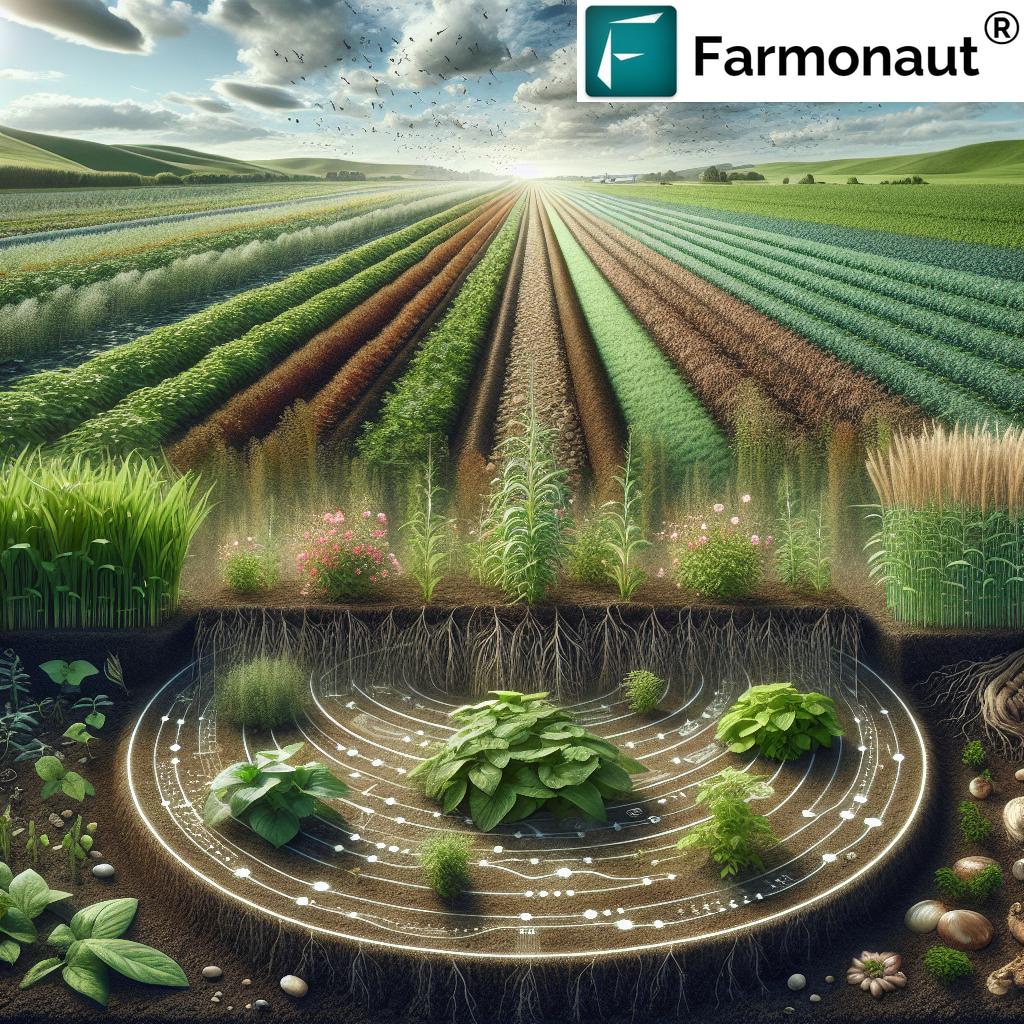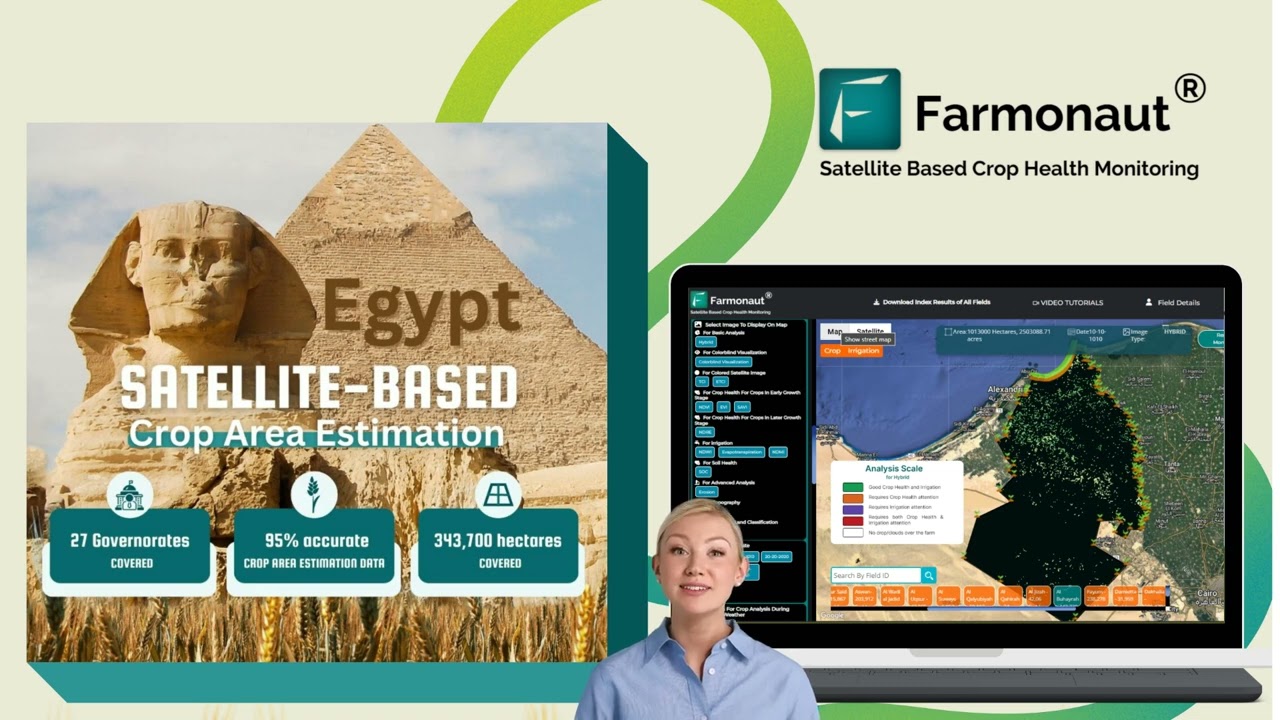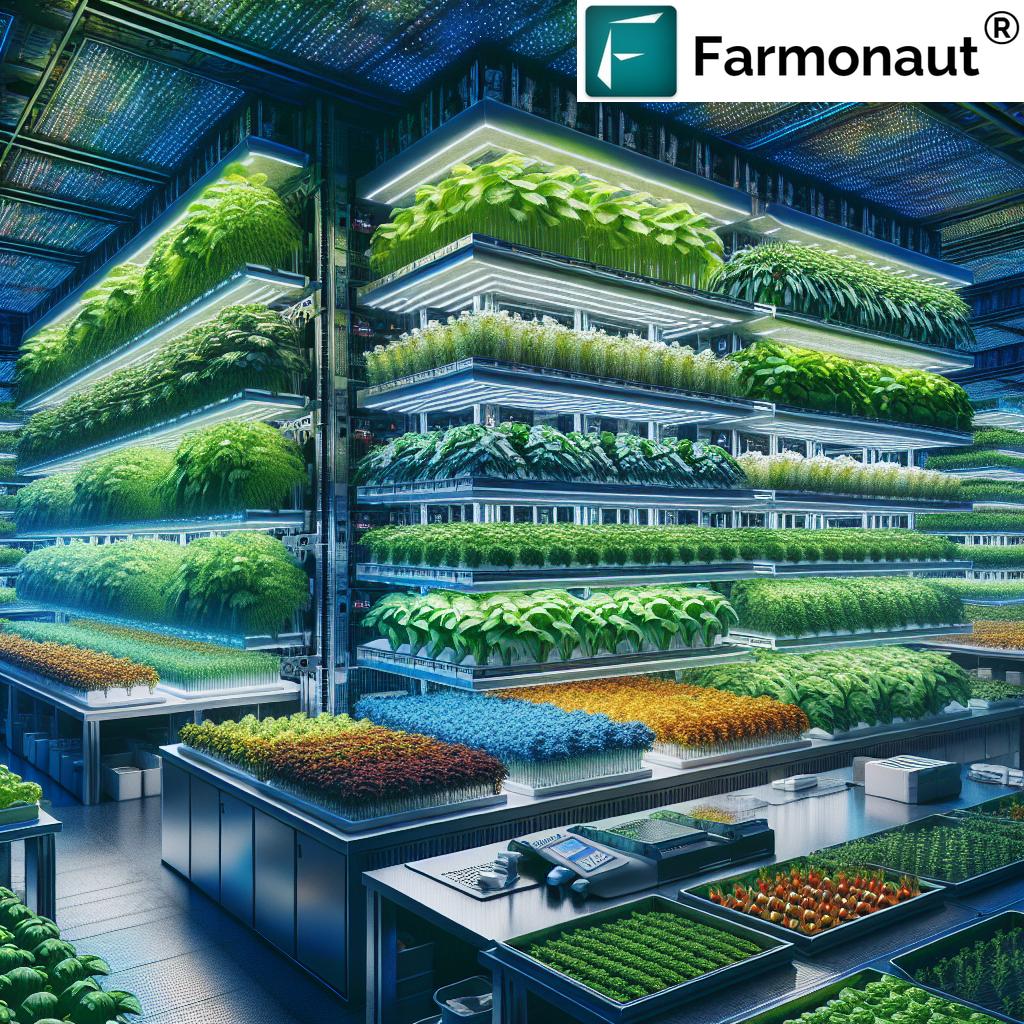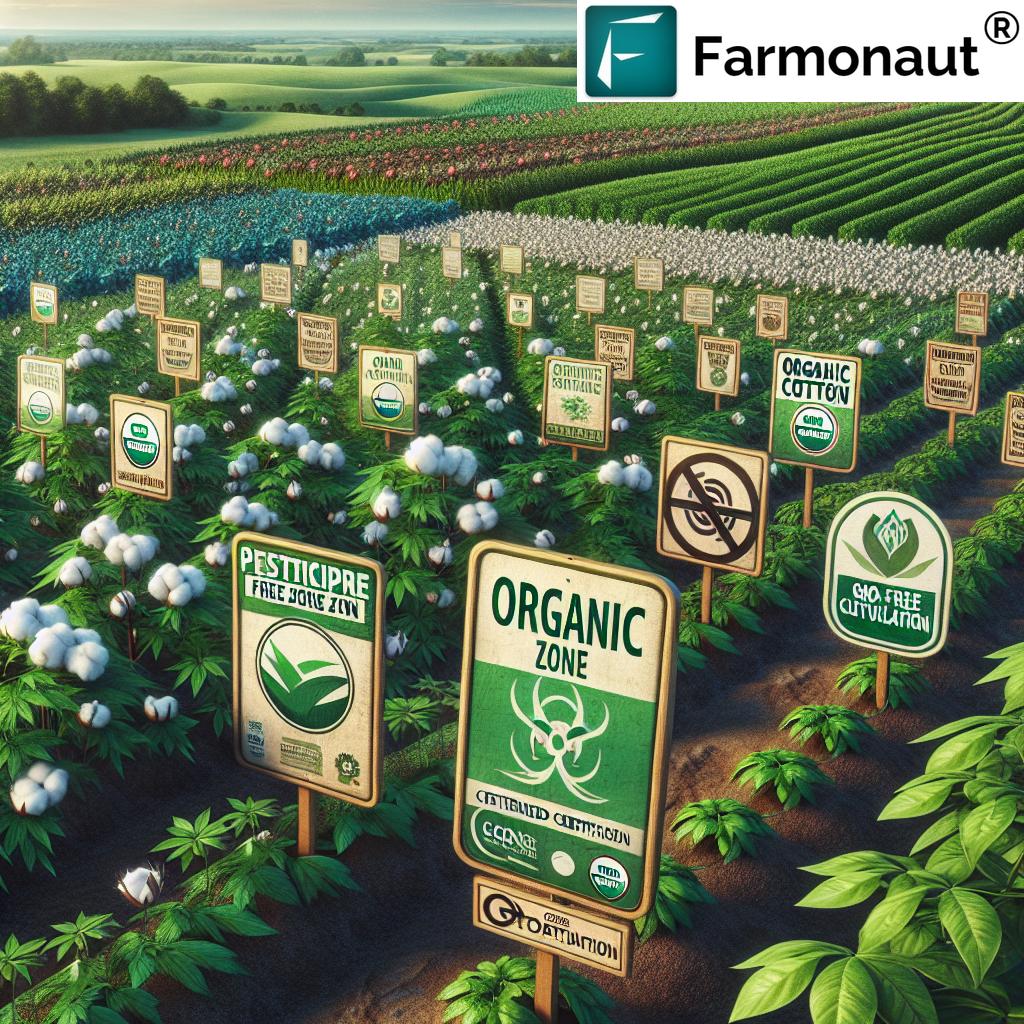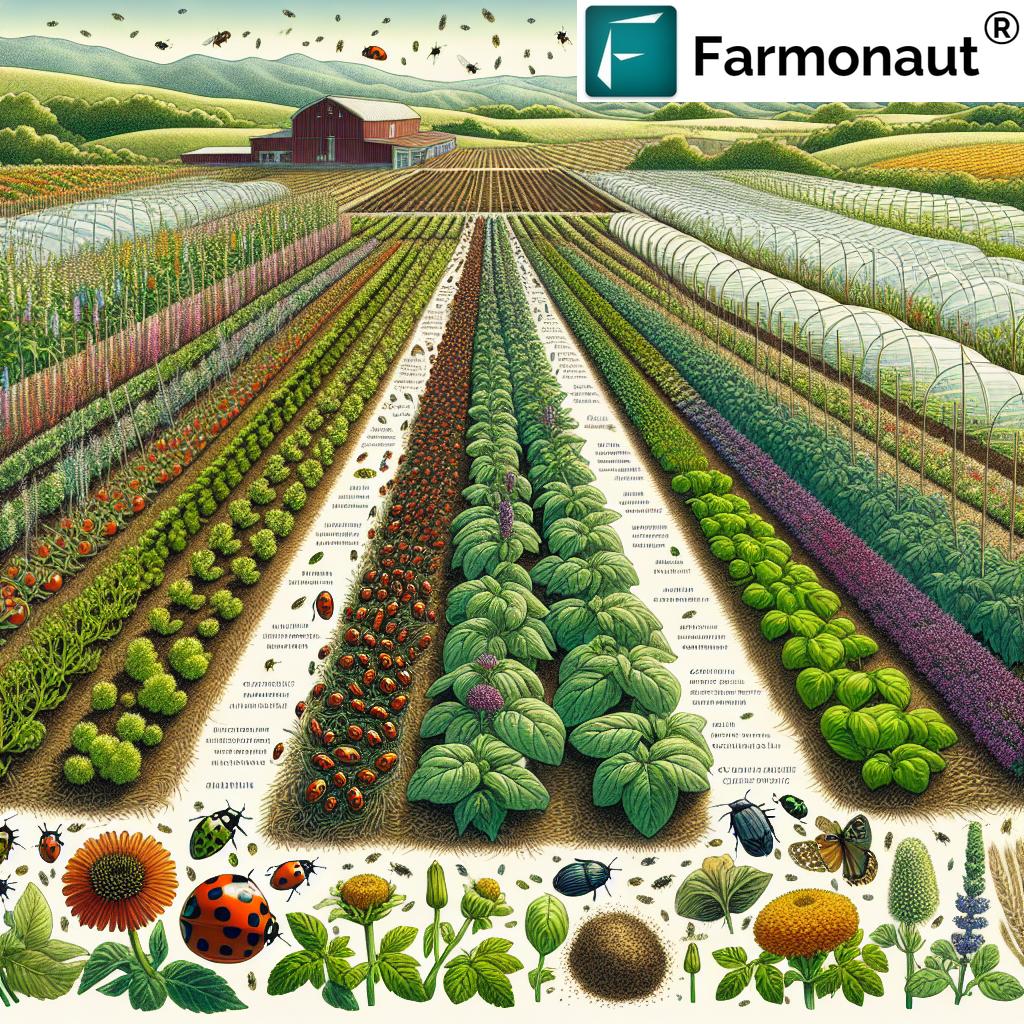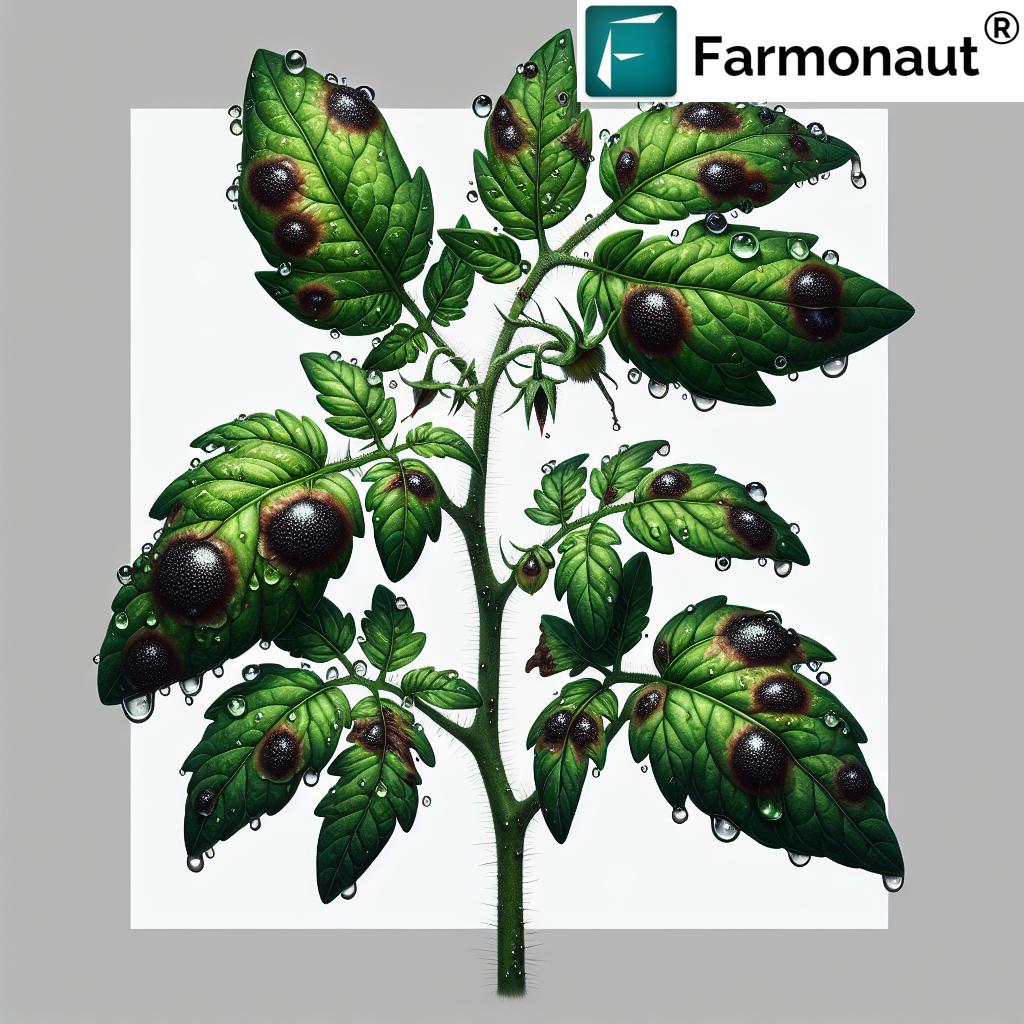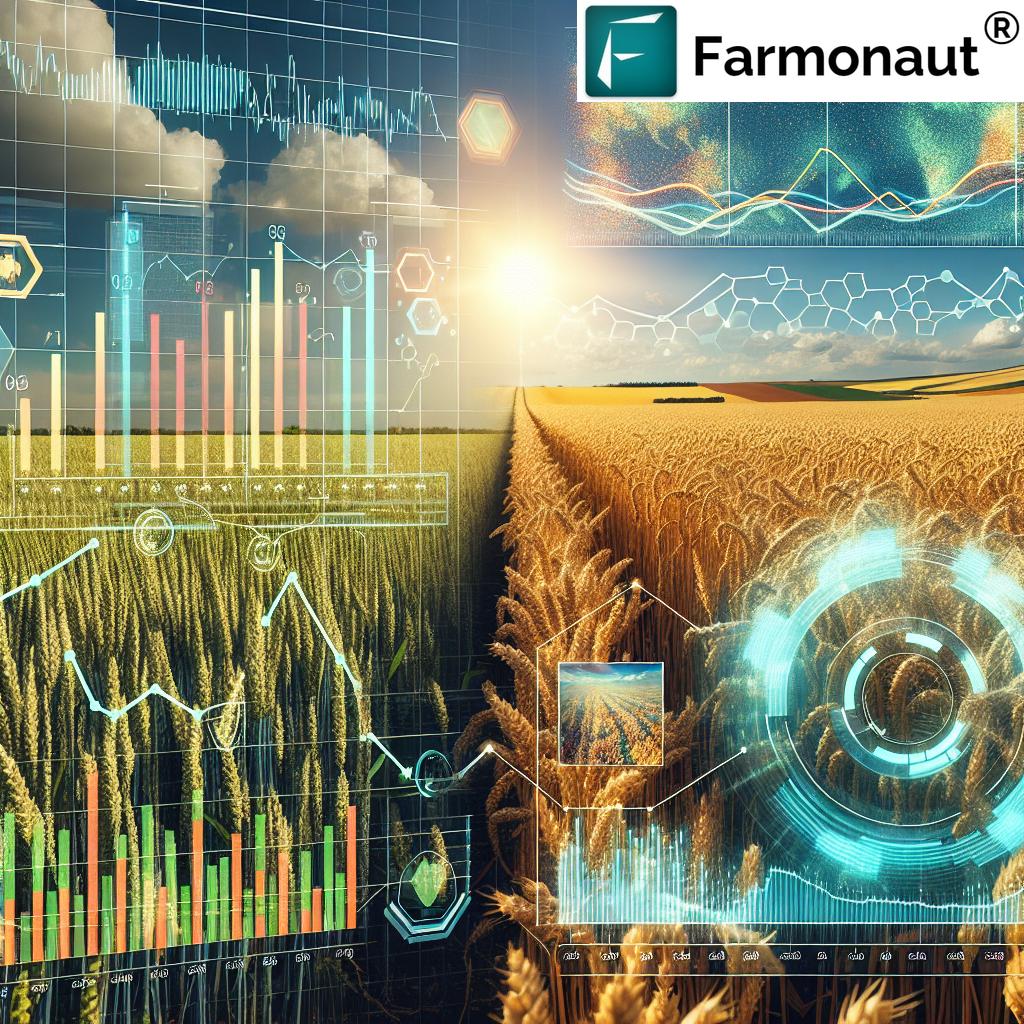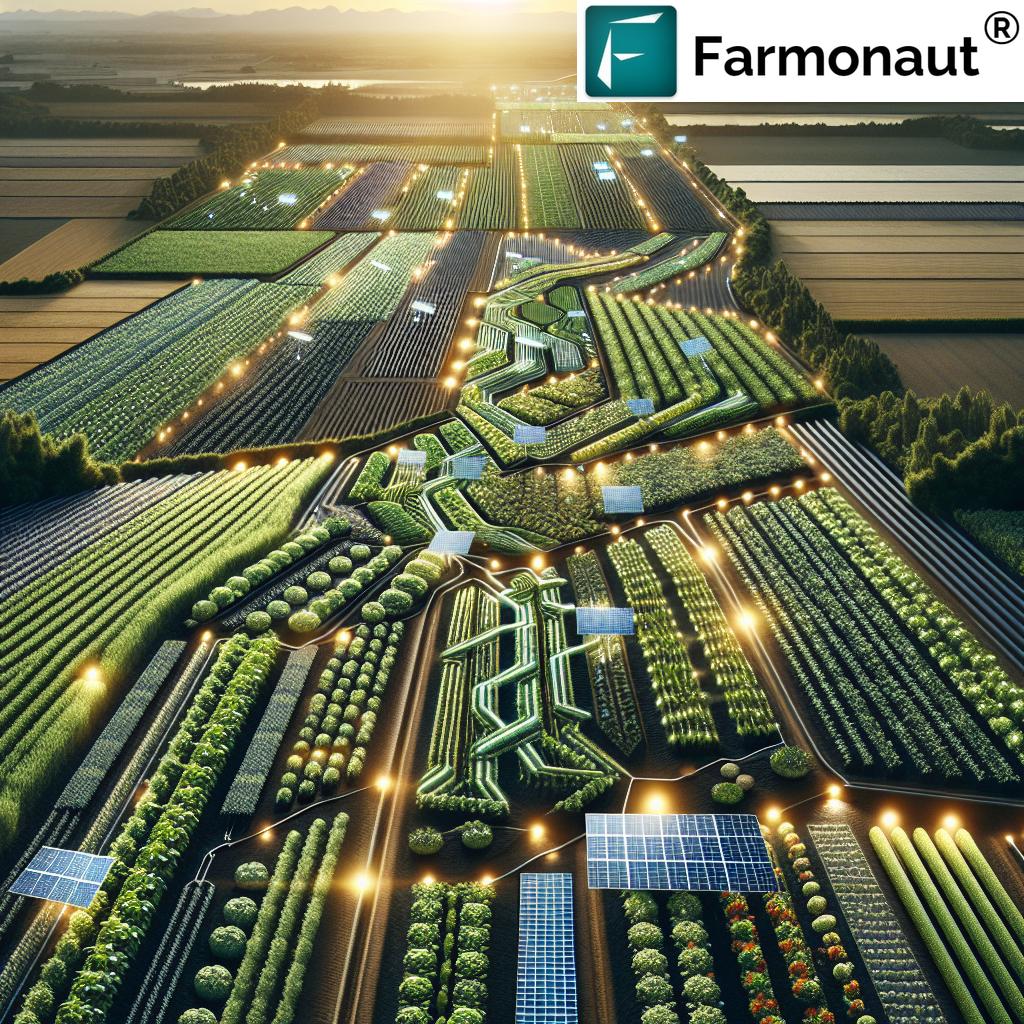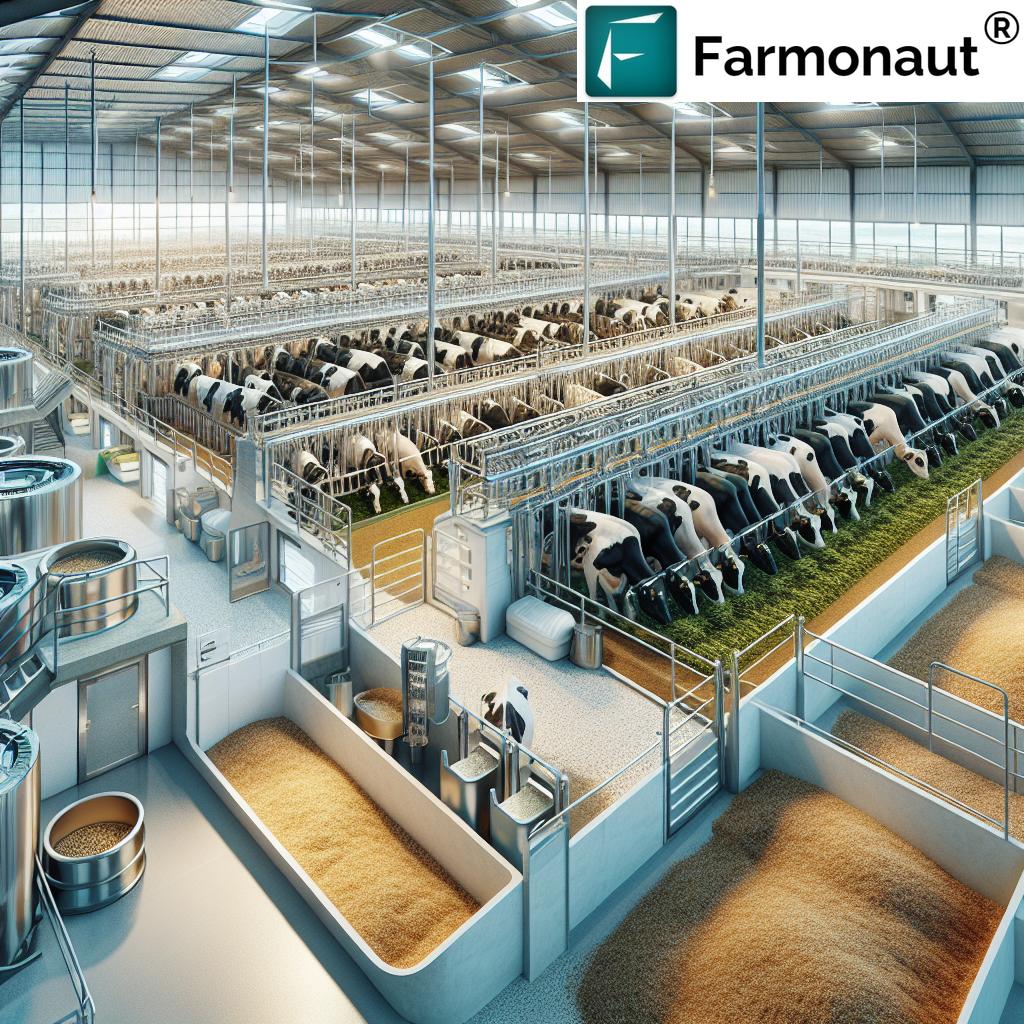Conservation Agriculture: 7 Shocking Benefits Revealed!
Welcome to an in-depth exploration of conservation agriculture—a revolutionary, sustainable farming approach that’s transforming yields and regenerating our soils. If you’ve ever wondered how modern agricultural practices can dramatically enhance environmental health, water efficiency, and biodiversity while keeping farms productive, you’re in the right place!
In this comprehensive guide, we’ll uncover the seven most surprising benefits of conservation agriculture, delve into the core principles behind it—including no-till farming benefits, permanent soil cover, and crop rotation advantages—and show you how to overcome key adoption challenges.
The quality of our soil, water, and ecosystem ultimately determines the future health and sustainability of our farms and food systems. Let’s discover how conservation agriculture can secure that future—and how tools like Farmonaut’s precision agriculture solutions can empower every step of the way.
Introduction: Why Conservation Agriculture Is a Game-Changer
Today, we are at an agricultural crossroad. As global demand for food intensifies, traditional farming methods frequently lead to soil degradation, dwindling biodiversity, water scarcity, and increased greenhouse gas emissions. At the same time, climate change is challenging the resilience and productivity of our farms.
Enter conservation agriculture—a set of sustainable farming practices that offer an environmental and economic lifeline. Conservation agriculture is built on three core principles:
- Minimum soil disturbance (no-till farming)
- Permanent soil cover
- Diversification of plant species (crop rotation/intercropping)
Through these methods, we can enhance soil health, increase water efficiency, stimulate biodiversity, and safeguard future food security. Scientific studies and farmer reports across the globe confirm: the benefits of conservation agriculture are staggering.
Key Principles of Conservation Agriculture
1. Minimum Soil Disturbance (No-Till Farming Benefits)
Traditional tillage, involving mechanical soil turning, often leads to soil erosion, organic matter loss, and disturbance of beneficial soil organisms. In contrast, conservation agriculture minimizes soil disturbance—commonly via no-till farming or minimum-tillage methods—to preserve soil structure, enhance water infiltration, and protect the integrity of the soil ecosystem. These methods:
- Preserve the organic matter and prevent loss of soil fertility
- Enhance water retention and minimize runoff
- Promote healthy, living soils that support increased yields
- Support beneficial soil organisms for natural nutrient cycling
2. Maintenance of Permanent Soil Cover
Soil left bare after harvest is extremely vulnerable to erosion, crusting, and loss of organic matter. By utilizing cover crops or leaving crop residues on the field, we protect the soil, reduce evaporation, and build carbon—an important step for climate change mitigation. Permanent cover delivers the following benefits:
- Shields soil from solar radiation, heavy rainfall, and wind (reduce soil erosion)
- Maintains soil moisture and cools the root zone
- Supplies food and habitat for diverse soil organisms
- Contributes to carbon sequestration, combating greenhouse gas buildup
3. Diversification of Plant Species: Crop Rotation & Intercropping Advantages
Instead of monoculture, conservation agriculture encourages:
- Crop rotation: Growing a variety of crops in sequence
- Intercropping: Cultivating more than one species simultaneously
This diversification improves soil fertility, disrupts pest and disease cycles, reduces risk of crop failure, and increases biodiversity in farming systems. It’s a smarter way to ensure sustained productivity!
Benefit Comparison Table: The 7 Shocking Benefits of Conservation Agriculture
How does conservation agriculture outperform conventional systems? Use this comparison table to visualize the core benefits across soil, ecosystem, and economic indicators:
| Benefit | How It Works | Estimated Impact (%) | Sustainability Contribution |
|---|---|---|---|
| Enhanced Soil Health | Minimizes disturbance, maintains structure, builds organic matter | 20–30% higher soil organic matter | Boosts fertility, resilience, and reduces degradation |
| Improved Water Use Efficiency | Improves infiltration & retention; reduces runoff/evaporation | 15–35% less water used per yield | Prevents water wastage, supports crops in dry periods |
| Increased Yields | Promotes healthy soils, reduces stress, enables higher plant vigor | Up to 20% higher yields | Improves food security, income, and profitability |
| Reduced Soil Erosion | Mainly from permanent soil cover and less tillage | Up to 60% lower erosion rates | Prevents loss of soil, nutrients, and helps land regeneration |
| Biodiversity Increase | Diversification supports wider range of organisms | Up to 30% more species in and above soil | Improves pest control, pollination, and ecosystem stability |
| Lower Greenhouse Gas Emissions | Builds soil carbon, uses less fuel, improves sequestration | 10–25% less GHG emissions | Combats climate change and improves air quality |
| Reduced Input Costs | Less fuel, fertilizer, and chemical use over time | 10–30% lower input costs | Supports long-term farm sustainability and profitability |
Unlocking the 7 Benefits of Conservation Agriculture
1. Enhanced Soil Health Improvement
Healthy soils are the foundation of resilient, high-performing farms. Conservation agriculture’s no-till and residue cover practices build organic matter and nurture beneficial soil organisms. By minimizing disturbance, we preserve soil structure and its capacity to cycle nutrients:
- Higher organic matter translates to increased nutrient cycling—essential for plant growth.
- Less compaction means better root development and resilience against drought and stress.
- Improved structure enhances water infiltration and retention, vital for plant health.
Scientific evidence indicates that conservation practices can boost soil organic matter by 20-30% over several years, laying the groundwork for long-term productivity.
Want to measure and reduce your field’s carbon footprint while tracking soil health?
Try Farmonaut’s Carbon Footprinting platform—offering actionable insights for sustainable land management and compliance with environmental policies.
2. Water Efficiency in Agriculture
Conservation techniques boost water use efficiency by increasing infiltration and reducing evaporation: fields with cover crops lose less moisture from their surface, and improved soil structure holds water near the roots. This is especially critical in drought-prone regions, where every drop counts:
- No-till and cover cropping increase water retention by 15-35% compared to bare soils
- Enhances plant access to water and reduces the need for irrigation
- Minimizes water runoff, ensuring that rain benefits the field rather than eroding it away
Farmers’ take: Improved water efficiency in agriculture means more reliable yields, even in challenging years.
Looking for data-driven resource management?
Farmonaut’s Large-Scale Farm Management Tools help you track soil moisture, schedule irrigation, and boost water use efficiency for every hectare.
3. Increased Crop Yields and Profits
Conservation agriculture isn’t just eco-friendly—it’s also yield friendly! Once soil health improvement, water efficiency, and pest resilience are established, yields typically increase by up to 20%. Here’s why:
- Fewer plant stressors result in more vigorous crops
- Increased availability of nutrients from healthy soils
- Lower weed pressure and disease outbreaks due to better soil biology
Many farm systems using conservation agriculture report higher yields using fewer chemical inputs—leading to better profit margins and long-term sustainability.
Need crop loan verification and insurance services to support your income from increased yields?
Use Farmonaut’s Crop Loan & Insurance Tools for fast, satellite-based farm verification for easier, more secure access to financing.
4. Reduce Soil Erosion and Restore Degraded Lands
Soil erosion is one of the world’s biggest farm sustainability threats—and one that conservation agriculture directly addresses. Permanent soil cover combined with reduced tillage shields the soil from wind, rain, and extreme weather, cutting erosion by as much as 60%:
- Preventing topsoil loss preserves the invaluable nutrients and structure required for healthy crops
- Reduces river and watershed pollution, helping to safeguard aquatic ecosystems
- Enables the long-term regeneration of degraded lands
5. Biodiversity in Farming: Natural Pest Resistance and Ecosystem Resilience
The shift to diversified cereal, legume, and cover crop rotation and maintenance of cover nurtures a thriving ecosystem—both above and below ground.
- Up to 30% more species—from pollinators, beneficial insects, and birds to bacteria and fungi—lead to healthier, more resilient environments
- Diversified fields disrupt pest/disease cycles, reducing dependency on chemical treatments
- Improved biodiversity in farming encourages natural pollination and soil health improvement
This leads to an ecosystem that is less prone to catastrophic pest outbreaks or disease shocks.
Looking to verify your crop’s journey and sustainability value?
Discover Farmonaut’s Blockchain Traceability Solution—empowering transparency and trust from farm to fork for both consumers and supply chains.
6. Lowering Greenhouse Gas Emissions: Sequestration and Sustainable Land Use
Climate smart farming starts with carbon-smart soil!
Through minimal disturbance and use of cover crops, conservation agriculture not only reduces on-farm emissions by cutting fuel and fertilizer use but also locks more carbon in the soil:
- Soil carbon sequestration reduces atmospheric CO2 by 10–25%
- Permanent cover and plant residues continually feed the soil, preventing carbon loss
- Less plowing means less fuel, translating to fewer greenhouse emissions from field operations
Farmers make a direct contribution to climate change mitigation through every conservation practice adopted!
7. Reduced Input Costs and Overall Economic Gains
Not only do conservation practices bolster productivity, they also cut costs—making farms more profitable in the long run:
- Less tillage means reduced labor, fuel, and maintenance for machines
- Greater soil fertility translates to lower fertilizer and chemical requirements
- Stable, healthy soils reduce risk and economic volatility for farmers
With up to 30% lower input costs, conservation agriculture directly strengthens farm businesses.
Want to optimize logistics and resource allocation?
Explore Farmonaut’s Fleet Management Solution—improving safety, efficiency, and cost-savings across all farm machinery and resource movements.
Challenges and Solutions in Conservation Agriculture Adoption
Conservation Agriculture Adoption Challenges
While the benefits are clear, many farmers still face real challenges when transitioning to conservation agriculture:
- Economic Constraints: The up-front investment in no-till equipment and specialized tools can be significant, especially for smallholders. There may be a short transition period with temporary yield fluctuations and reduced short-term income.
- Cultural & Knowledge Barriers: Traditional farming knowledge is ingrained, so resistance to new methods and skepticism about conservation agriculture’s effectiveness are common obstacles.
- Limited Access to Resources: Lack of technical know-how, access to modern equipment, and suitable seed varieties can hinder the shift to conservation practices, particularly in developing areas.
- Weed Management: Reducing tillage can initially lead to more weed pressure, requiring new, integrated weed control strategies (e.g., crop rotation, cover cropping, mechanical and biological controls).
How We Can Overcome These Constraints:
- Digital advisory systems (like Farmonaut’s Jeevn AI) provide ongoing, personalized knowledge updates and weed management solutions.
- Access to satellite data and real-time farm analytics empowers farmers to make more informed, cost-effective decisions.
- Government incentives, subsidies, and capacity-building programs can help accelerate conservation agriculture adoption.
- Collaborative farmer networks foster rapid learning and provide essential peer support.
Farmonaut: Enabling Precision, Sustainability, and Digital Farm Management
Farmonaut is at the forefront of digital agriculture, delivering actionable data and AI-driven advisory to make conservation agriculture more accessible and effective for everyone:
- Satellite-based crop health monitoring: Track field vegetation health (NDVI), soil moisture, and vital metrics for informed management.
- Jeevn AI advisory: Personalized farm advice, weather forecasts, and crop management strategies for every user.
- Blockchain traceability & carbon footprinting: Ensure transparent, sustainable farm-to-fork products and monitor environmental impact.
- Efficient resource, fleet, and large-scale farm management tools: Optimize every operation, from planting to harvest.
The Farmonaut platform is available via the web app, Android, iOS, and even through API access (see API developer docs).
Subscription-based pricing makes these advanced, precision agriculture tools affordable and scalable for farms and agribusinesses of all sizes.
Policies and Global Adoption of Conservation Agriculture
Global adoption rates for conservation agriculture are steadily rising—including in the United States, where up to 30% of cultivated land is managed under no-till practices. Latin American and African countries are also making significant strides, spurred by government incentives and increasing awareness of the sustainability advantages.
- Policy support is instrumental. For example, the US Farm Bill and recent climate legislation allocate funds specifically for conservation programs supporting farmers.
- However, expert concerns remain—ensuring that such policies deliver measurable results for climate, food security, and farmer welfare is an ongoing conversation.
- Public and private sector investment in farmer training, equipment subsidies, and digital tools will continue to play a crucial role in future adoption, especially across resource-constrained regions.
FAQ: Conservation Agriculture Unveiled
What is conservation agriculture?
Conservation agriculture is a sustainable farming approach that relies on minimum soil disturbance (no-till or reduced tillage), permanent soil cover (through cover crops or crop residues), and diversification of plant species (via crop rotation and intercropping) to improve soil health, increase yields, and protect biodiversity.
How does conservation agriculture improve soil health?
By minimizing tillage and keeping the soil covered, we build up organic matter, preserve soil structure, enhance nutrient cycling, and promote a thriving population of beneficial soil organisms.
What are the economic benefits for farmers?
Farmers adopting conservation agriculture often experience lower input costs, higher yields, and increased farm sustainability. Over time, the reduction in soil erosion and the improvement in water and nutrient efficiency lead to more profitable and resilient farming systems.
Are there challenges in the adoption of conservation agriculture?
Yes. The main challenges include up-front investment in equipment, temporary yield drops during transition, lack of technical knowledge, and weed management. However, digital advisory platforms, resource-sharing, and government support are helping to overcome these hurdles.
Is conservation agriculture effective in all climates?
Conservation agriculture principles can be adapted for many climatic regions worldwide, from arid to humid areas. Site-specific strategies and proper crop rotation design are crucial for optimal results.
How can technology support sustainable farming practices?
Advanced technology—such as Farmonaut’s satellite monitoring, AI-based advisories, and digital recordkeeping—makes it easier to implement, adapt, and continuously improve conservation agriculture practices in real-world farm conditions.
How does Farmonaut differ from other agricultural services?
Farmonaut is not a marketplace, manufacturer/seller of farm inputs or machinery, or a regulatory body. Instead, it provides affordable, satellite- and AI-enabled farm management solutions accessible via app, browser, and API—empowering a wide range of users to adopt precision agriculture and sustainable practices.
Conclusion: Cultivating a Resilient Future—Why Conservation Agriculture Matters
The evidence is clear: adopting conservation agriculture sets the stage for healthier soils, higher yields, more resilient ecosystems, and thriving farm enterprises. By embracing sustainable farming practices like no-till farming, permanent soil cover, and crop rotation, we not only restore degraded lands and enhance food security but also help combat the adverse impacts of climate change.
With digital tools and precision insights from platforms like Farmonaut, every farm, large or small, can join the movement for a green, climate-smart, and profitable agricultural future. Now’s the time to adopt these principles, boost sustainability, and unlock the full benefits for our land, our communities, and generations to come.






